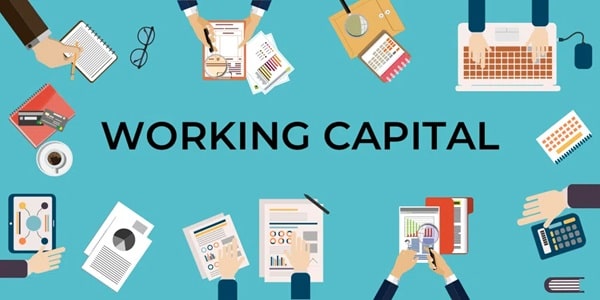Working capital is simply the amount or funds a company or business uses for day-to-day operations or trades, that’s pretty much the concept here. And yeah, it is super easy to calculate the working capital for any business or any company, you just need to take out the current liabilities from the current asset of that company or business, and the rest of what you have got is working capital. Simple as that. Now, if you are wondering where it could be beneficial or what the downsides of this working capital thing could be, then keep on reading. That’s because here we will be talking about the possible advantages and disadvantages of working capital. So yeah, let’s get to it then.

Advantages Of Working Capital
Like always, let’s get to the positive side of things related to working capital, ready?
1. The Cool Thing About Flexibility
So, why is having enough working capital super important? Well, let’s talk flexibility. Let’s say you’re running your business and bam, the market changes overnight. With enough money or funds in your pocket (a.k.a working capital), you’re like a pro, ready to jump on those new chances. Let’s say, outta nowhere, everyone wants what you’re selling. If your cash flow is solid, you can easily buy more stuff to sell and keep up with the crazy demand. It’s all about moving fast and making the most of what comes your way.
2. Staying Steady with Stability
Now, let’s chat about stability, another big win of having enough working capital. It’s like having a comfy cushion, you know? When sales take a nosedive, and let’s be honest, it happens a lot, especially in the rollercoaster Indian market, this cushion keeps you from crashing. You’ve got bills to pay, people to look after, and operations to run. Good working capital means you’re not sweating it when things get a bit rough. You keep doing your thing, business as usual, no matter what the market throws at you. That’s the kind of peace of mind you need, right?
3. Kick-Starting Growth
Alright, let’s talk about growth for a sec. You know, working capital? It’s what lets you throw in some cool new tech, bring more hands on deck, or maybe even spread your wings wider by expanding your business. And yeah, this stuff really matters, especially in a place like India where the market’s booming like crazy.
4. Competitive Advantage
Now, if you’ve got a solid chunk of working capital, you’re basically holding a golden ticket. It’s like having a secret weapon in your back pocket. You get to play nice with your customers, offering them chill payment terms or sweet discounts. And, you know what? This is a game-changer. It pulls customers towards you and, more importantly, keeps them sticking around.
5. Better Credit Rating
Here’s another thing, a healthy pot of working capital can be your ticket to a shiny credit rating. What’s that mean for you? Well, it’s like having an all-access pass to loans with killer terms, slicing down your borrowing costs. Plus, it’s like a trust badge with your suppliers and vendors. They see you as a solid player, and that’s always good for business.
Disadvantages Of Working Capital
Alright, now’s the time to give you a full picture on this working capital thing, here we go.
1. The Price of Missed Chances
Ever think about what you’re missing out on when you’ve got too much working capital just sitting around? It’s like this: you’ve got cash tied up when it could be out there making more money for you. Let’s say you’ve got a chance to invest in something big, something that could bring in way more cash in the long run. But yeah, if your money’s all caught up in day-to-day stuff, you’re gonna miss out. That’s what we call opportunity cost. It’s the price you pay for not grabbing those big investment opportunities that could’ve given you a pretty sweet return.
2. The Downside of Low Earnings
And here’s another thing, working capital isn’t exactly a money-making machine. Yeah, sure, it’s safe and all, but it’s just sitting there, earning peanuts in interest. You’ve got this pile of cash, but if it’s all in working capital, you’re not gonna see it grow much. It’s like putting your cash under the mattress and expecting it to multiply, it just won’t happen. So, what’s the point? Well, having too much in working capital means you’re not making the most of what you’ve got. Your business could be earning way more, but instead, it’s kinda just taking a long nap. You wanna wake it up and put it to work, right?
3. Wasting Resources
When you’ve got too much working capital, it’s like holding onto a bunch of stuff in your inventory that you’re not even using right. What happens then? Well, your costs start creeping up, and your profits begin to dip. Not cool, right?
4. Higher Chance of Theft or Bad Management
Here’s another thing, if you’ve got more working capital than you need, you’re basically inviting trouble. Think about it, there’s more chance someone might nick something, or things just aren’t handled the way they should be. That’s why it’s super important to have solid checks and balances in place.
5. Tough to Get More Money
Now, here’s the ironic part. You’d think having a lot of working capital is great, but guess what? Sometimes, it actually makes it tougher to get your hands on extra financing. Lenders look at you and think, ‘Hmm, they’re not really using what they’ve got wisely.’ And just like that, getting more funds becomes a bit of a headache.
Conclusion
That’s pretty much it. Now you have a good idea of what this working capital thing is, how it is used, what benefits it can serve and what challenges a company or business may face when using working capital. We hope that our today’s post helped to clear up all your doubts about this concept, so yeah, we’ll see you in the next one.
Working Capital FAQs
Q. Why is working capital important?
Ans: Working capital is crucial for maintaining smooth operations and covering short-term expenses such as payroll, inventory purchases, and bills. Insufficient working capital can lead to liquidity problems and hinder a company’s ability to meet its obligations.
Q. How do you calculate working capital?
Ans: Working capital is calculated by subtracting a company’s current liabilities from its current assets. The formula is: Working Capital = Current Assets – Current Liabilities
Q. What does positive/negative working capital indicate?
- Positive working capital: When current assets exceed current liabilities, it indicates that a company has enough short-term resources to cover its obligations.
- Negative working capital: When current liabilities exceed current assets, it suggests that a company may struggle to meet its short-term financial commitments.
Q. How can a company improve its working capital?
- Increase efficiency in accounts receivable and accounts payable management.
- Tighten inventory management to reduce carrying costs.
- Negotiate better payment terms with suppliers.
- Increase sales revenue or secure additional financing.
Q. What are some common working capital management techniques?
- Cash flow forecasting
- Inventory management
- Accounts receivable management
- Accounts payable management
- Short-term financing options such as lines of credit or short-term loans
Q. How does working capital differ from cash flow?
Ans: Working capital focuses on the balance between current assets and current liabilities at a specific point in time, reflecting a company’s short-term liquidity. Cash flow refers to the movement of cash in and out of a business over a specific period, reflecting the company’s ability to generate cash from its operations.
Q. Can a company have too much working capital?
Ans: While having excess working capital may seem positive, it could indicate inefficient use of resources. Excess working capital means the company is not investing those funds to generate returns, potentially missing out on growth opportunities.
Q. What are the risks of inadequate working capital?
- Inability to meet short-term obligations
- Difficulty in funding day-to-day operations
- Potential damage to supplier relationships
- Higher borrowing costs if short-term financing is needed urgently

Meet Suhas Harshe, a financial advisor committed to assisting people and businesses in confidently understanding and managing the complexities of the financial world. Suhas has shared his knowledge on various topics like business, investment strategies, optimizing taxes, and promoting financial well-being through articles in InvestmentDose.com


